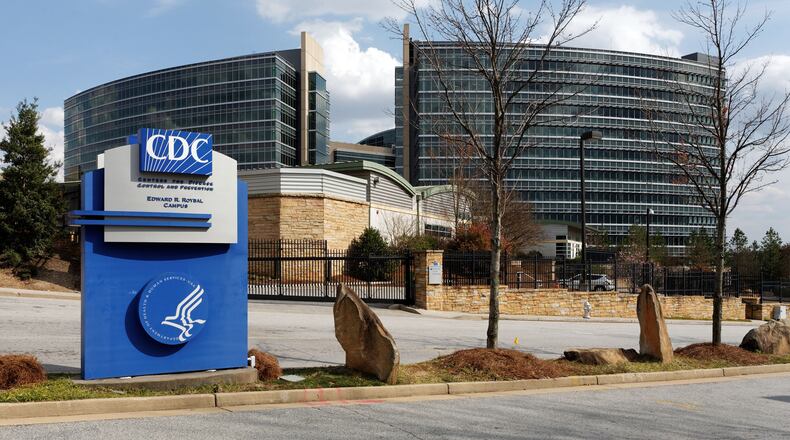As the former chief of staff and deputy chief of staff at the Centers for Disease Control and Prevention during the initial days of the agency’s COVID-19 response, we were eager to read Dr. Scott Gottlieb’s new book, “Uncontrolled Spread”.
In it he addresses many of the events that occurred during the U.S. government’s COVID response and how we can better prepare for future threats. Most importantly, he points out that we must recognize public health as an integral part of our national security.
He states that “[g]oing forward, extending an approach to public health preparedness that views these risks through a lens of national security protection also means building resilience into our public health infrastructure.”
Credit: contributed
Credit: contributed
We couldn’t agree more. But before we go forward, we must look backward and ask ourselves how did we get to the point where we were so unprepared to fight this virus?
A public health infrastructure that has been woefully underfunded for decades meant old data systems and siloed data platforms were unable to provide the quality, real-time data which was needed to support the right public health decisions being made at the right time.
Sadly, this topic isn’t new. Going back to 2006, Congress has passed multiple legislative packages that mandate the CDC to better coordinate public health surveillance networks and data platforms to break down data silos and collect real-time data on potential public health threats. Sounds great, but Congress failed to provide the CDC the adequate, sustained or flexible funding to implement that mandate.
Credit: contributed
Credit: contributed
It wasn’t until 2019 that Congress finally gave the CDC the initial, sustained funding to implement its Data Modernization Initiative to address these congressional mandates. Unfortunately, this initial funding came just a year before COVID hit and didn’t have the time to make the impact we needed to be better prepared.
Many states were still having to use pen, paper, email and even fax machines to collect the COVID data the CDC needed to inform its public health decisions. While CARES Act funding and other federal dollars distributed during COVID are intended to fix some of these areas, it’s difficult to ensure new systems and investments are maintained with “one-time” funding. These new systems take money every year to maintain and update or they quickly become obsolete.
As an example, the Department of Defense would never buy brand-new F-35 fighter jets and then not budget for the maintenance of those investments, but that’s exactly what we have done in public health.
Currently the CDC has been able to increase their budget through supplemental spending bills, like the CARES Act, but there’s no guarantee that the increases they received for COVID will remain. The CDC similarly received increased funding in supplemental bills for Zika and Ebola only to see the funding needed to sustain those investments in public health dry up.
Congress must get serious about how it funds public health if we are going to make the changes that Dr. Gottlieb suggests in his book.
Congress currently funds the CDC with nearly 200 different funding lines and little to no flexibility to move funds across accounts. This became a major problem while developing the CDC’s Data Modernization Initiative. Money was needed to move data from on-site servers into the cloud so that data silos could be more easily broken down. Some programs within the CDC had the money to do this while others didn’t.
The flexibility to move funding around the agency to address these data issues doesn’t exist. Within those nearly 200 funding lines, Congress lays out strict guidelines on how the money can be spent. Pooling already-appropriated money from a program to use on agency-wide updates to old data systems just isn’t possible.
CDC and our nation’s public health infrastructure were tasked with responding to a threat they were unequipped to respond to as a result of underfunding for decades.
The majority, roughly 70% or more, of the funding that the CDC receives goes directly to states to help build and support their public health infrastructure.
Unlike the feds, most states must have a balanced budget. So, when Congress chooses to fund public health through supplemental, short-term or one-time funding it creates booms and busts or the equivalent of a fiscal cliff that prevent infrastructure from being maintained. States are unable to make up the difference, and we are left where we are today -- with an underfunded public health system in the greatest country in the world.
The National Institutes of Health is well funded at $40 billion a year to accomplish its mission of developing lifesaving cures, but at the beginning of 2020 the CDC’s budget was only $7.7 billion, split over those 200 funding lines to accomplish its mission of implementing science to prevent, detect and respond to public health threats.
Congress has still not learned the lesson of how to appropriately invest in public health, even as we continue to live through a once-in-100-years pandemic. This is unacceptable.
Until Congress funds our nation’s public health infrastructure with increased, sustained, flexible funding it will continue to be a threat to our national security.
Kyle McGowan and Amanda Campbell are founding partners at Atlanta-based Ascendant Strategic Partners. They were chief of staff and deputy chief of staff at the Centers for Disease Control and Prevention (CDC). In their roles, they oversaw day-to-day operations and served as senior advisors to the CDC director, including providing strategic planning and guidance in the development of the CDC’s Data Modernization Initiative.
About the Author
Keep Reading
The Latest
Featured




